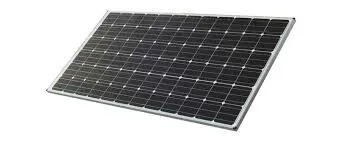Comparing Monofacial and Bifacial Solar Panels for Optimal Energy Efficiency
Monofacial vs. Bifacial Solar Panels A Comprehensive Comparison
In the world of solar energy, the debate between monofacial and bifacial solar panels is heating up as technology evolves and the demand for efficient renewable energy sources grows. Both types of solar panels have unique characteristics, advantages, and disadvantages that influence their performance and suitability for various applications.
Monofacial vs
. Bifacial Solar Panels A Comprehensive ComparisonHowever, monofacial panels have limitations. Their energy production is heavily reliant on direct sunlight, which can result in decreased efficiency during overcast days or in shaded areas. Additionally, because they only capture sunlight from one side, their total energy yield may be lower compared to bifacial panels.
monofacial vs bifacial

On the other hand, bifacial solar panels are a newer innovation that can capture sunlight from both sides. This dual exposure significantly increases their energy generation potential, especially when installed in reflective environments, such as snowy regions or areas with light-colored surfaces. Bifacial panels can harness indirect sunlight, effectively boosting their overall efficiency. Research indicates that bifacial solar panels can produce anywhere from 10% to 30% more energy than their monofacial counterparts, making them a compelling option for large-scale solar farms.
Despite their benefits, bifacial panels also come with challenges. They are generally more expensive to manufacture and install, and their performance is heavily influenced by the installation angle and the type of surface underneath. Additionally, proper installation is crucial to maximize their potential, requiring careful planning and consideration of site conditions.
In conclusion, the choice between monofacial and bifacial solar panels largely depends on specific needs, budget constraints, and installation conditions. While monofacial panels remain a reliable and cost-effective option, bifacial panels present a promising advancement in solar technology that can yield higher energy production in the right circumstances. As the market continues to evolve, both types of panels will play essential roles in the transition to a sustainable energy future.
-
Unlocking Energy Freedom with the Off Grid Solar InverterNewsJun.06,2025
-
Unlock More Solar Power with a High-Efficiency Bifacial Solar PanelNewsJun.06,2025
-
Power Your Future with High-Efficiency Monocrystalline Solar PanelsNewsJun.06,2025
-
Next-Gen Solar Power Starts with Micro Solar InvertersNewsJun.06,2025
-
Harnessing Peak Efficiency with the On Grid Solar InverterNewsJun.06,2025
-
Discover Unmatched Efficiency with the Latest String Solar InverterNewsJun.06,2025







